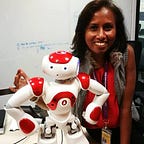Today I read the news that 200 job cuts are planned at the Australian telecom provider OPTUS. OPTUS is two of the main telecom players in the Australian Telecommunications industry who touches consumers on their daily lives.
When summaries, the main reasons behind the initiative is digital transformation. “We are making changes to roles, reshaping teams and centralising functions to ensure we continue to be aligned with customers. We are continuing to remove duplication and streamlining processes to create even greater efficiencies and maintain a sustainable cost base. We are also further reducing management layers to speed up decision making and empower our people.” CEO Allen Lew has explained in an email to employees.
Further, in the note, he has said: “We will introduce the Agile way of working to priority areas in our FY20 Plan that will benefit from a high degree of cross-functional collaboration to deliver an exceptional experience to customers,”( Rohan Pearce, Computerworld, 2019).
What does that mean
Undoubtedly digital disruptions have forced companies to think differently on their value stream. Customer focus, the value-driven economy is the mainstream. I should clarify the ‘Customer’ in this context.
Most of the cases customer means the person who buys the product/service from the company. However, one of the main components of this value stream is the employee. For corporate functions like human resources, operations, Information Technology or shared services, employees are their main customers. Hence organisations should be focusing on their employees in the same interest and passion they showcase to consumers.
Speed matters
When we want to provide faster service to our customers, where the delay occurs on the value stream matters. Most of the time these delays are occurred due to:
- Communication Gaps
- Siloed work culture
- Segregation of work based on functions
- Information leakage from strategy to operations
- Hierarchies
- Unnecessary processes
Hence the agile way of working has tremendous success by removing these impediments.
Agile way of working
As of right now, the agile way of working has been proven to be bringing success in digital disruption. Agile way of working includes cross-functional small teams with autonomy is working together in a collaborative workplace. It does not have hierarchies. All team members are exposed to the same set of information. The team defines processes. The team decides what works for them and keep continuing. They critically judge what is not working for them and change it. They have a purpose, and they do everything to achieve that purpose, and they go beyond their regular job description to fulfil that purpose.
Some organisations like ING bank, Netflix, Spotify have pioneered and mastered it while some organizations are late in this game. However, Optus case here is convincing us that new way of working is mandatory to be successful and face digital disruption (although I am not convinced about the job cuts due to the agile way of working. I do believe if an enterprise level transformation is planned, then jobs also can be transformed with proper programs).
Skills transformation
In another few years times, our current jobs functions will be completely transformed. You, as a reader, may have already seen this. As an example, there is no ‘receptionist’ at the front desk of most of the organisations these days. Instead, what they have is either a face recognition device enabled via motion sensors or an iPad asking the visitors to enter the details of the purpose of the visit and whom they visit which then notify the person to walk to the front desk, meet and greet the visitor. Some hotels in Tokyo are fully automated, and the entire check-in and checkout process is done without any human involvement. Room service is done using walking robots.
For most of the people, this is daunting. Are they going to be jobless in the future? However, at the same time, this gives the responsibility to the leaders as well as individuals to think about how to transform the existing workforce to the new era. That is the workforce transformation.
Workforce transformation
Digital transformation should not be limited only to the digital space. It should and is touching upon every aspect of the value stream. Various job functions like recruiters may not exist in the future. Artificial Intelligence (AI) can scan profiles available in the cloud and provide a recommendation to the hiring manager on whom to recruit. That can be sometimes more accurate as AI will use data available on the web to make that decision.
That leaves the question on what will happen to the recruiters today. That is a problem to solve by all leaders and employees. It is leaders job to find out how to transform the current job functions to fit the future needs, how they will upskill the employees to fit the future.
It is also the employee’s responsibility to understand how their job is going to be transformed in the future. What skills they need to learn to be successful and not negatively impacted by the disruption so that those new skills are acquired today. That responsibility cannot be passed to anyone else.
As an example, a doctor in a rural clinic should take the responsibility to learn how to use technology as in the future he may be diagnosing a patient at home 2000 kilometres away via virtual reality.
Technology does not leave anyone. Hence it is everyone’s responsibility to embrace it.
References
Rohan Pearce, Computerworld, 2019, Retrieved from https://www.computerworld.com.au/article/662284/optus-cuts-200-roles-expands-agile-program/?fp=16&fpid=1
